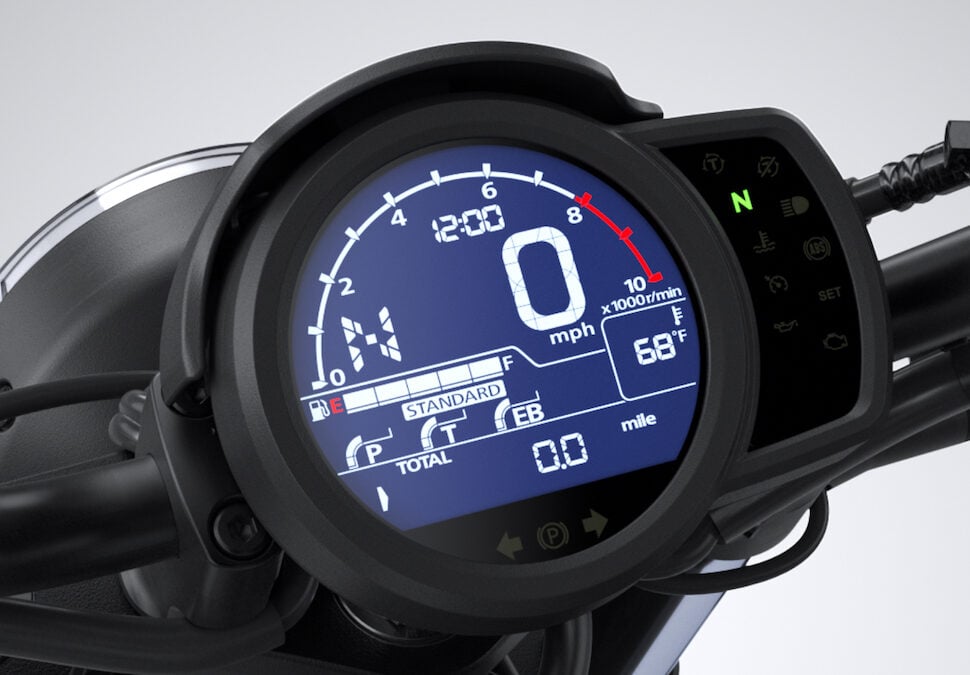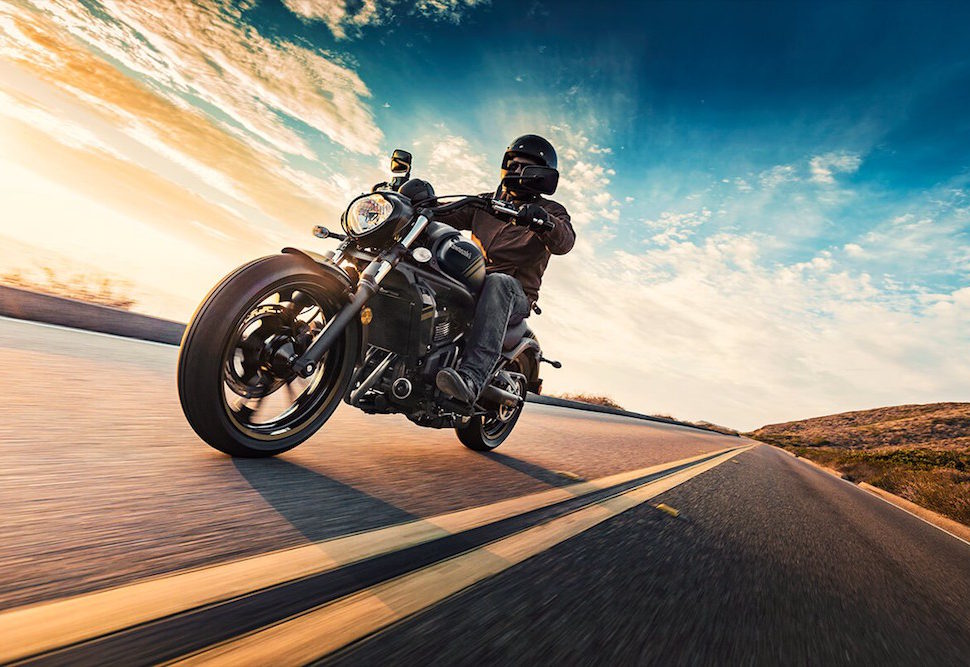Cruiser-style motorcycles are based, for the most part, on the designs of American-made machines from the 1930s. These were the big Harley-Davidson and Indian motorcycles with low saddles, fat tires, and gracefully sculpted fenders and gas tanks.
Today, the cruiser market offers a number of choices with manufacturers turning out new renditions of a staple machine – but they’re far from the Art Deco ideal of those early bikes. Here, we pick five great cruiser models fit for new riders. Followed by a couple of tips to consider before buying your first cruiser.
Honda Rebel
Introduced in 1985, the original CMX250 Honda Rebel lasted until 2016. With a low 26-inch seat height and weighing 320 pounds with a full tank of gasoline, the Rebel is a reliable and manageable machine.
Its air-cooled 234cc parallel-twin engine offers 16 horsepower and 12.4 lb.-ft of torque and is easy on fuel. Older Rebels often turn up for sale, and some of the earliest examples are attractively priced.
Honda replaced the CMX250 Rebel with a new model in 2017. Well, actually, two models – the Rebel 300 and the larger Rebel 500. To say these new bikes were completely updated would be an understatement, as there’s really no comparison in looks between the earlier 250s and the new models. They do, however, still offer a lower 27-inch seat height and are lighter-weight motorcycles (364 pounds for the 300 and 408 pounds for the 500).
Power for the 300 comes from a liquid-cooled 286cc single-cylinder engine coupled with a six-speed transmission, and the 500 features a liquid-cooled 471cc parallel-twin cylinder engine and six-speed transmission. Need more power? Honda adds the new Africa Twin-powered Rebel CMX1100 cruiser to the family in 2021. Need more fun? Check out this funky 2023 Honda ST125 Dax.
Suzuki Savage/Boulevard
Much like the Honda Rebel, the Suzuki S40 Boulevard has been around since the mid-1980s, but when it was introduced it was called the Suzuki LS650 Savage.
Powered by a 652cc single-cylinder engine, the first models featured a 4-speed transmission, but an extra gear was added in 1993 to give the bike a 5-speed gearbox. It puts out 31 horsepower and makes 37 lb.-ft. of torque and is slotted into a frame that offers a 28-inch seat height.
Overall weight is 381 pounds with all fluids and the bike, with its belt final drive versus a chain, is somewhat easier to maintain.
Suzuki doesn’t list the S40 for 2020, but it appears the 2019 models are still available from some dealers. Here’s the Suzuki cruiser lineup.
Used parts are easy to find, and once done enjoying the Savage/Boulevard as a cruiser there are many options to use the platform to build a full-custom machine. One company, Ryca Motors, offers a kit to transform the Suzuki into a café racer. Yes, there’s some assembly required, but the possibilities for radical personalization are almost endless.
Yamaha Virago/V-Star
Perhaps no other machine has influenced the Japanese cruiser market more than the Virago. When introduced as a 750cc v-twin motorcycle in 1981, it set the tone for the entire industry with its low seat height and chopper-esque styling. Over the years, Yamaha added a number of different displacements, from as small as 125cc to as large as 1100cc.
The middleweight Virago 535 was produced from 1987 to 2003 and its 535cc v-twin engine with five-speed transmission delivered power to the rear wheel through a virtually trouble-free shaft drive. Used examples turn up often for reasonable money, but as with any pre-owned bike, ensure it has been well-maintained. Replacing tires, batteries, and fluids and performing a tune-up can quickly add to the cost of purchase.
The Virago became the V-Star series, and while the middleweight 535cc motorcycle is long gone, the company still makes a 250cc example. The V-Star 250, with its classic 249cc v-twin engine that produces 15.2 ft.-lb. of torque and its five-speed transmission offers enough power for a neophyte rider. It weighs in at 324 pounds full of fluids and also offers a low 27-inch seat height. The 2022 V-Star 250 starts at only $4,599 across the US.
Kawasaki Vulcan 500/Vulcan S/Vulcan S ABS
Launched in 1984 as a 700cc cruiser, Kawasaki’s Vulcan lineup expanded to include many different models with a variety of engine sizes. As a machine for a beginner, one might look for a used Vulcan 500. Produced from 1990 to 2009 (first as the EN500A, then, in 1996 the Vulcan 500 LTD), the machine was powered by a liquid-cooled 498cc parallel twin engine. It’s a simple motorcycle featuring a belt final drive, single disc front brake, and drum rear brake. It makes 46 horsepower and 33 lb.-ft. of torque and will maintain highway speeds.
Currently, the smallest cruiser in Kawasaki’s Vulcan range is the futuristically styled model S. Powered by a 649cc liquid-cooled parallel-twin engine with 6-speed transmission and chain final drive the Vulcan S has a seat height of 27.7-inches. The bike features adjustable footpegs and different seat and handlebar options to offer something of a custom fit. Kawasaki also offers the Vulcan S with antilock-braking technology on the Vulcan S ABS model to help increase rider confidence.
Harley Davidson Sportster/Iron 883
The largest machine on this list is the Harley-Davidson 883. A storied machine with roots that stretch back to the early 1950s and the 750cc K-model motorcycle, by 1957, Harley-Davidson had enlarged the v-twin engine to roughly 884cc with the introduction of the Sportster, or XL series.
Today, the base model Sportster is the 883 (for 883cc) and features the Motor Company’s Evolution v-twin engine that produces 53.8 ft.-lb of torque with a five-speed transmission and chain final drive. While it might seem somewhat overpowered for a beginner, the 883 offers one of the lowest seat heights in the industry at 25.7 inches. It’s something of a heavyweight, however, and tips the scales at 564 pounds full of gasoline and oil.
Parts, both new and used for just about all Sportster models, are plentiful. There’s a huge aftermarket industry serving these machines, too, and there’s a massive dealer network. Just about every town and city across Canada and the U.S. has a shop devoted to working on and selling parts for Harley-Davidsons, something that cannot readily be said for all makes. For 2021, Harley rolled out the new Sportster with more power, on-demand torque, a lightweight chassis, and contemporary tech. The 2022 Iron 883 model starts at $11,249.
For example, a friend riding his Suzuki across Canada needed to replace a sprocket, and in the town on the East Coast where he found himself, there was no dealer with ready stock. Had he been riding a Harley-Davidson, he said, he’d not have had such an issue.
There you have it, five good options to get you started. But before buying your first cruiser, keep these tips below in mind.
Two things to consider before buying your first cruiser motorcycle
Choosing one for a beginner rider depends on a number of factors, including overall stature; being able to comfortably put feet flat on the ground to support the bike is important.
Smaller engines offer plenty of torque
Engine size is always a consideration, too, but the adage bigger is better need not apply. Smaller bikes offer plenty of opportunity to build up skills and confidence, safely, and even a 250cc machine has plenty of torque to get up and move.
Benefits of buying used the first time out
Here are several machines for a beginner to consider, with a mix of new and old. Why a mix? While a brand-new motorcycle might seem like a good idea, purchasing a used bike can be a much less expensive proposition. Plus, adding a scratch or a dent won’t be a heartbreaker – and that will eventually happen. As well, an older machine provides an opportunity for a neophyte motorcyclist to learn some basics of motorcycle maintenance.







